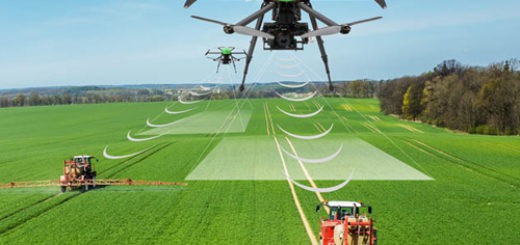
Agriculture drones are really helpful for farmers
UAVs or drones have been used for many decades to correct various scientific data or scout a particular territory. Now, these devices are getting even more popular as farmers have taken to the skies via drones to monitor the condition of their crops.
This revolutionary technology allows farmers to capture accurate images of their fields, spanning over hundreds of acres in a single flight session.
The days of farmers standing in a field and looking for signs of rain are a thing of the past as agricultural drones are quickly taking over reconnaissance tasks to detect crop anomaly or other conditions.
Need for drones in the agricultural sphere
These UAVs not only conduct reconnaissance of the agricultural land but also provide far better resolution than images captured by satellites. This technology comes to greater use at times when there is cloud covering the sky and satellite images cannot be relied upon.
According to recent studies, experts predict that the agriculture sector will tap into almost 80 percent of drone market in the next few decades. Powered by a technology of the future, these devices have the ability to take the agriculture sector to greater levels of sustainability.
Ways in which drones for agriculture are helping farmers

Gather more information: This is perhaps the greatest benefit of drones as they can scout the fields efficiently and in short a short period.
This is extremely convenient compared to conducting a scout manually using a tractor or by foot.
Check the health of crops: Infrared technology used in many drones can identify any stress or an anomaly in a plant as much as 10 days before it becomes apparent to the naked eye.
When a plant goes into stress, it is mainly because of three reasons – lack of fertilizers, shortage of water, or attack of pests; this information gives farmers enough time to take necessary measures to improve the health of their crops and prevent large-scale losses.
Improve crop health: Drones can also help the farmers to collect various data related to plant height measurements by measuring the range of plant canopy and the ground.
These models can aids farmers in making better decisions about fertilizers as they represent close to 50 percent of total input costs. By making use of high-tech sensors to absorb infrared wavelengths, drones can show areas where fertilizers like nitrogen and phosphorus might be required. This is precision agriculture at its finest.
Make efficient use of water resources: Advanced quality drones have thermal cameras that can detect temperatures of various areas of the field. It can identify regions where it is cooler and well watered as well as dry patches that need watering.
Using this data, farmers can modify their plans field irrigation and save excessive water from getting wasted in the process. By increasing the efficiency of both water and fertilizers, drones can reduce run-off of fertilizers into nearby streams and rivers which may have led to algal blooms and dead zones in the water system.
Agricultural progress: The aim of drone usage is to ensure greater yield, reduce cost, and drive the farming business forward. The drones highlight which areas of crops need attention rather quickly, which means the farmer spends less time scouting and more time in treating the affected plants.
Crop scouting workflow using drones
Basically, the concept of scouting can be broken down into six segments, and the practice can be applied to, and plant varieties like soybean, wheat, etc. These activities have to be typically repeated during every stage of fundamental growth, and they are:
- Survey
- Analysis and inquiry
- Observation
- Assessment
- Compilation and planning
- Execution
Choosing the best drones for agriculture
Drones may make the process of farm field scouting much easier, but the same cannot be said when it comes to actually buying a device that offers the best value for money.
Within a limited budget, the best agriculture drones should provide features like thermal imaging, infrared technology, better resolution of images, more flight time, among a few other things.
A drone itself might look like a toy, but it can prove to be an indispensable tool to small farmers for increasing the longevity of their crops and ensuring a greater yield. As the agricultural sector is improving in technological aspects, we will certainly see a far more advanced usage of these devices in the near future.


